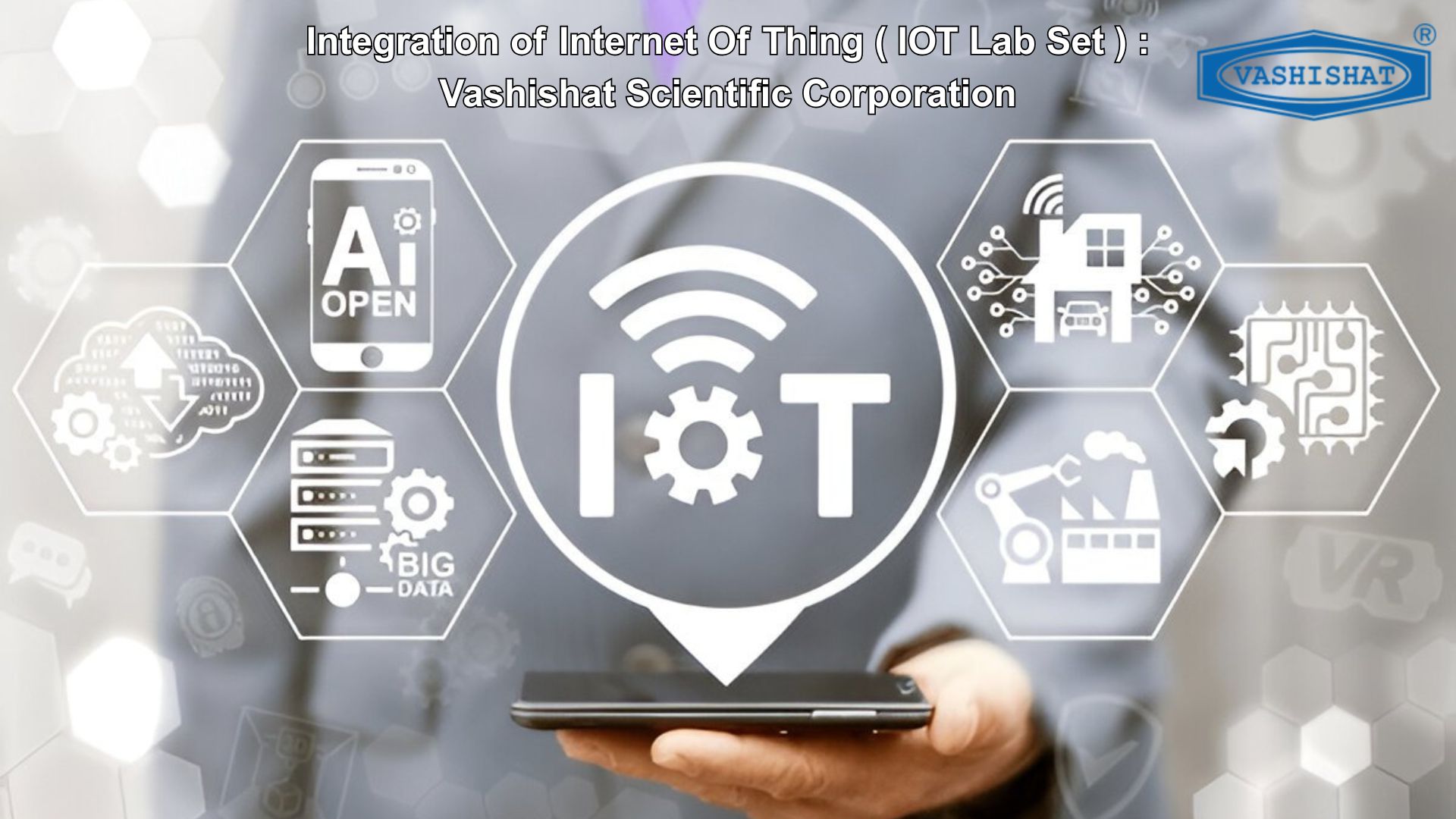
India's Leading Supplier Of Science Education Resources

The use of Internet of Things (IoT) generation in laboratories is transforming the manner lab operations are executed. By connecting lab equipment and gadgets to a network, IoT facilitates real-time facts collection, monitoring, and evaluation, leading to more advantageous efficiency, accuracy, and productiveness. This weblog explores the severa advantages of IoT-enabled lab equipment, real-global applications, and fulfillment testimonies, illustrating how IoT is transforming the contemporary laboratory panorama.
The Internet of Things IoT Lab Trainer Kits is a system of related gadgets that exchange data with one another over the net. These devices, embedded with sensors and software, can acquire and transmit facts, taking into account real-time tracking, manage, and evaluation. In a laboratory placing, IoT can connect diverse lab devices, device, and structures, growing a clever lab environment.
IoT devices can constantly tune lab equipment and environmental factors, delivering real-time statistics on variables like temperature, humidity, pH degrees, and device performance. This guarantees that experiments and procedures are performed underneath optimal situations and permits for the instant detection of any deviations or anomalies.
Automating records collection and monitoring minimizes the danger of human errors, resulting in extra specific and reliable consequences. IoT devices can carry out unique measurements and document records with excessive constancy, enhancing the general great of lab outputs.
By automating ordinary sports which includes facts logging, gadget calibration, and maintenance scheduling, IoT allows lab body of workers to concentrate on extra complicated and crucial responsibilities. This boosts usual lab productiveness and performance.
IoT sensors continuously monitor the situation and performance of lab equipment, making an allowance for the detection of capacity screw ups or maintenance necessities earlier than they stand up. This proactive technique minimizes downtime and guarantees that lab operations run smoothly without unexpected interruptions.
IoT structures can integrate with Laboratory Information Management Systems (LIMS) and different statistics management systems, facilitating seamless information transfer and consolidation. This permits comprehensive facts evaluation, fashion identity, and informed selection-making.
IoT can help labs comply with stringent regulatory requirements by imparting automatic, accurate, and time-stamped records of all lab sports. This guarantees transparency and traceability, which are essential for audits and best warranty.
Environmental monitoring is critical in laboratories in which situations like temperature and humidity can have an effect on the outcomes of experiments. IoT-enabled sensors can continuously song those parameters, sending signals to lab employees if conditions deviate from predefined thresholds. For instance, in pharmaceutical labs, keeping unique environmental situations is essential for the stability of compounds. IoT guarantees these situations are met, safeguarding the integrity of experimental results.
In research labs dealing with massive volumes of samples, IoT can streamline sample management methods. Smart freezers and storage units geared up with IoT sensors can music sample places, screen garage situations, and manipulate stock degrees. This minimizes the risk of sample degradation or loss at the same time as enhancing traceability. For example, a biotech organization might use IoT-enabled storage to make sure that biological samples are saved at most effective temperatures, enhancing the reliability of experimental consequences.
IoT can optimize each the utilization and maintenance of lab contraptions along with centrifuges, spectrometers, and microscopes. Sensors can display gadget overall performance, utilization patterns, and maintenance needs, allowing labs to time table maintenance proactively and keep away from costly breakdowns. A university research lab, for instance, may use IoT to make certain that shared device is functioning successfully and is with ease available while wished.
Safety is a paramount challenge in laboratories, specifically the ones managing dangerous substances. IoT enhances safety by means of tracking lab situations and ensuring adherence to safety policies. For instance, fuel sensors can locate harmful leaks and robotically activate alarms and ventilation systems, stopping accidents in chemical labs and ensuring a steady surroundings for researchers.
A clinical laboratory that specialize in diagnostic checking out carried out an IoT machine to decorate its operations. IoT-enabled gadgets were used to reveal the temperature and humidity of garage areas for reagents and samples, ensuring they had been saved inside strict parameters. The machine furnished real-time indicators to lab technicians if situations deviated, allowing for fast corrective movement.
Furthermore, IoT sensors have been established on diagnostic gadget to music performance and expect preservation desires. This proactive approach decreased equipment downtime and ensured that the lab should hold excessive throughput and accuracy in its checking out strategies. As a result, the lab noticed a extensive improvement in operational efficiency and reliability, leading to quicker turnaround instances for take a look at consequences and improved satisfaction amongst healthcare carriers and patients.
Although IoT integration in labs remains in its early phase, destiny improvements preserve extraordinary promise. Emerging technology like 5G, artificial intelligence (AI), and aspect computing will in addition boost IoT's ability, making lab operations greater advanced and efficient.
5G Connectivity: The deployment of 5G networks will permit faster and more dependable information transmission, allowing smoother connectivity for a larger range of IoT devices in labs. This will permit actual-time, excessive-bandwidth applications which includes far off tracking and control of lab equipment.
Artificial Intelligence: AI can procedure the massive records streams from IoT devices, uncovering patterns and insights that might go unnoticed via human analysts, main to breakthroughs in research and optimization of lab workflows.
Edge Computing: By processing statistics closer to wherein it’s generated, facet computing decreases delays and bandwidth use, taking into account faster and greater efficient real-time statistics analysis and decision-making in labs.
The integration of IoT technology in laboratories is remodeling the manner lab operations are carried out, imparting numerous blessings, consisting of actual-time tracking, stronger accuracy, progressed performance, predictive renovation, and higher information management. Real-world applications and fulfillment tales show the widespread effect of IoT in numerous lab settings, from environmental monitoring to sample management and device optimization. As IoT era continues to improve, the future promises even extra innovations and improvements in laboratory operations, making IoT an vital component of the cutting-edge lab landscape.
